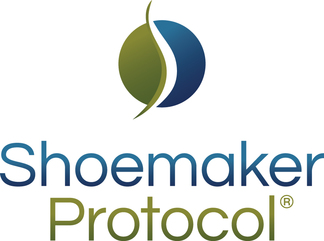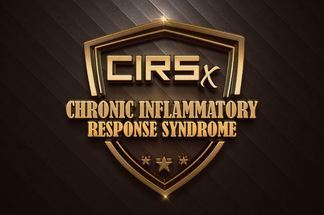Better than Resolutions
.jpg)
Better than resolutions…
Make recovery and thriving goals happen with
these key ideas and resources.
“I’m not sure if I told you, but there is another element tied to caring for the unknown…” his voice sparkling at the opportunity to share his secret weapon—“Doggedness. Churchill’s ‘never give up.’” –Dr. Ritchie Shoemaker, excerpted from an article by Shaler McClure Wright
Every year when the New Year rolls around, people begin to make goals and resolutions to be more health-focused, especially after a busy, festive holiday season.
Then, just a month later, by the time February gets here, it’s estimated that 80% or more of those exciting resolutions and goals have already been deemed a failure, and the old behaviors and habits are back in action.
With a few tips, insights, a good support system, and strategies, it’s possible to be a part of the successful 20% with greater ease and enjoyment.
When starting a new big goal or resolution, it is helpful to understand that changes and important goals require sustained action, which can be difficult to achieve on our own because it stretches us way out of our comfort zone and out of our habitual ways of dealing with life. We often cannot "see" or grasp a new way to act, make decisions, communicate, etc. on our own.
When you’re dealing with CIRS, there’s also often a debilitating health and energy factor you’re dealing with, and sometimes a cloudy mind, too. Yet, as daunting as recovery and thriving may seem, there are thousands of patients succeeding with the Shoemaker Protocol system.
There is also more and more groundbreaking behavioral science research with insights on how to overcome the statistics and make your goals more doable and attainable. Yes, even when it comes to dealing with CIRS.
Below we’ve curated a few top ways to help make those resolutions happen, as applicable to thriving with CIRS. Here’s to your healthiest year yet…
#1/ Be sure to have an accountability or support system
It is only logical that the bigger the goal, the more necessary it is to have consistent outside, experienced and empowering support—especially over time as the initial excitement of the goal fades, life gets in the way, and the learning curve gets more complex, or ruts happen, and so on. When it comes to long term CIRS management, getting the right kind of outside support is imperative for success. These kinds of big stretch goals and milestones require you to stretch into a whole new part of yourself… it will be identity changing, as well as lifestyle changing.
So, the first thing you can do to set yourself for lasting CIRS success is to create your supportive, experienced support team, including a Shoemaker Protocol Practitioner. There are many resources at Survivingmold.com which can also be of great support in tending to the many lifestyle changes necessary as well. We’ve compiled a list at the bottom of this article to support you every step of the way.
#2/ Change the approach. Try approaching it as a long-term work project, or a marathon (and not a race).
Changing the approach takes the hype and pressure off the initial resolution excitement, and helps prevent the common “go all out, then burnout fast” goal life cycle.
Begin by assessing where you are, where you’d like to be, what went well in the past, and what areas you need to make improvement in.
Then make your big overarching goals and outcomes, and prioritize them. Write them down. Say them out loud. Tell them to an accountability buddy. Envision the outcomes you most desire. These steps have been shown to support successful goal realization outcomes.
The important next step is making doable micro goals for your top goal (or two). Don’t’ try and do it all at once. Commit to one priority action step a day toward your top goal. This keeps you in the marathon, one sure step at a time, in a paced way you can stick to no matter what. This doable pace keeps your confidence up, too. The bonus is, some days you’ll be motivated to do more than just one action step!
For instance, when first faced with the CIRS diagnosis, the first big goal is to set your self up in a healthy environment. The rest of the health journey can’t happen until this goal is accomplished. Focus on this one aim, break it down into doable daily steps. And then focus on the next big goal or two, which may be getting a remediation team together and underway, and/or beginning step #2 of the Protocol.
Also, it helps to accept frustrations and setbacks as part of the journey to reaching your goal. It helps to be prepared for them, and to recognize them when they show up. Bumping into obstacles means you’re moving forward. Take it as a moment to reassess, re-center, regroup, and choose your next steps forward.
#3/ Work on the inner-game goals, too.
Keeping stress and negativity managed and your mindset healthy is proving to be one of the healthiest things you can do for yourself. A downer mindset will make every step a struggle, and deplete your energy and motivation. And a resilient, centered, or uplifted mindset will fuel you and your goals.
Here are a few healthy mindset shifts to get you started:
- Instead of “just get to the end result as fast as possible” mindset, shift into resilient “marathon mentality.” Pace your self and your priorities, and create micro goals to keep moving forward every day.
- Shift into “Beginner’s Mindset.” With all there is to learn about CIRS, it can be overwhelming to say the least. So be prepared for an on-going learning curve. Be patient with yourself. Be ok with not knowing it all right away, or even within a year or two… See if you can learn to enjoy learning new things about CIRS, and about yourself.
- Try Dr. Shoemaker’s “secret” success mindset, “doggedness,” Churchill’s “never give up.” Or find your own inspiring quote, motivating hero, or attitude.
- Make your inner-game goals tailored specifically to your weak areas. Start by assessing the mental/emotional or behavioral patterns that block you or trip you up. For instance, do you tend to experience self-doubt? If so, make your inner-goal about building self-confidence or resiliency. Does your inner critic sound off? Make your inner goal about building more self-love or optimism. Do you tend to put others before your goals? Make your inner goal about building up your self worth, or developing more inner-security when it comes to saying “no.”
- Learn a new method or practice like stress management, breathing methods, mindfulness, Qui Gong, sign up for a meditation app, or simply spend time in nature. There are many stress reducing, emotional management, and mindset shifting programs and methods available – which can help you stay the course with a winning mindset, more energy, and much less inner-strife, stress, and struggle.
#4/ Reward your self along the way, often.
Another way to keep moving toward your goals is to implement a reward system, and make the day-to-day new steps and habits more enjoyable and rewarding.
We are more likely to thrive in our goals when we find ways to enjoy the journey, and even the new habits! Learn to enjoy learning, or turn on upbeat music while you clean, or enlist the help of an uplifting friend.
Also, when you reach the end of a week, or a goal milestone, do a
“project” review – and reward yourself for showing up and sticking to it, whether or not you’re as far along as you’d hoped you’d be. When you do reach your big milestones, do something extra special for yourself, and maybe for your team as well. You really are all in this together, so it’s a reward in itself to celebrate reaching the small and big goals as a team.
Here are a few resources to help you thrive in 2023:
1) Enlist the help of a Shoemaker Practitioner, or join a support group led by a Shoemaker Practitioner.
2) Join the Surviving Mold Membership Program. Sign up monthly or up to a year, and receive access to Dr. Shoemaker via the Member Q&A Portal, free VCS tests, premium resources, the latest updates delivered to you, and more.
3) Dr. Shoemaker’s CSM or VIP Protocol Medication Modules
4) The All-in-One Recovery, Remediation, and Relapse Prevention Manual: “Mold Illness, Surviving & Thriving”
5) Dr. Shoemaker’s essential book “Answers to 500 Questions”
6) When in doubt, take a VCS test and proactively check your symptoms. Nip relapse in the bud or monitor progress. Your membership package includes VCS tests, be sure to use this valuable tool!
7) Stay connected. Join our online communities, Facebook or Instagram
Featured Resources for Community
The Surviving Mold Gift List
Give the precious gift of CIRS health & support with 10 gifts that keep on giving.
Shoemaker Protocol™ Quick Start:
The 3 initial steps to determine if mold is affecting you One of the most common questions we hear is, “how do I know if I have mold illness?” Rest assured, if you’re asking this question, you’ve come to the right place.
AirOasis The #1 CIRS Spring Cleaning Hack
Specialized air purifiers are revolutionizing deep cleaning, no matter the season. They’re a game changer for remediation purposes, too.
CIRS Spring Cleaning Checklist
Living with CIRS means cleaning and maintenance efforts must be ongoing and up to CIRS-safe standards. Spring is a perfect time to do a thorough examination and cleaning of the entire home and create a schedule for the year ahead.
CIRSX Annual Conference June 5-8, 2025 in Tempe, Arizona!
Early Bird Discount ends March 7!




